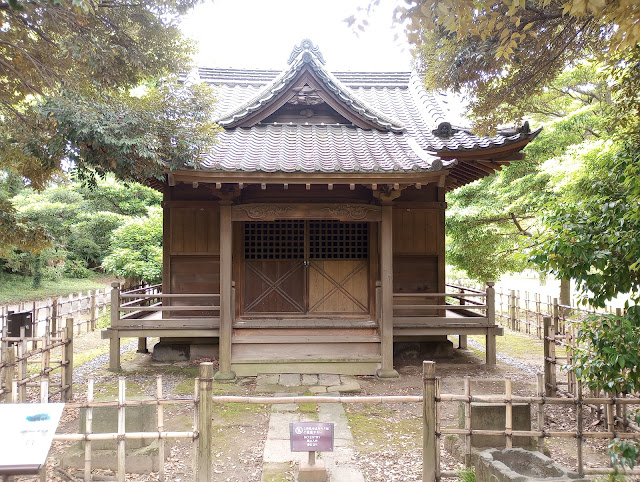The jet lag on this trip has been tough to get over but this is not unexpected. Yesterday afternoon around 4:30pm I was feeling quite tired so I decided to lay down and have a nap. I woke up at 1:00am this morning! My body still thinks that it's back in Saskatchewan. This will no doubt begin to shift over the next several days. One great thing about having jet lag and getting up so early though is that I can totally avoid the intense rush hour commuter traffic on the Yamanote line every morning.
Once I was through the gate (and 300 Yen / $3 lighter), a sea of grass, trees and flowers opened up before me. The further I proceeded in the gardens, the more the hustle and bustle of the city melted away. The smell of the trees and grass were a great antidote to the smells of cars and industry in the city.
The deeper I progressed, the more nature enveloped me. What a peaceful, lovely place Hama-rikyu Gardens is. I was so happy to be back here. While I love the city, I do like to get some peace and quiet when I'm on vacation. This was definitely a great place to visit. Even the juxtaposition of skyscrapers around the gardens made for an interesting sight.
Having wandered around the concrete jungle of Kanda and Ikebukuro, I figured that it was time to seek out some nature. There really isn't much left in Tokyo with respect to the natural environment. Given Japan's geography and the population density in the Tokyo metropolitan area, most of the land here is heavily developed. There are patches though of greenery that have been preserved. These are usually areas of some historical significance. This is the case with the place that I explored today: Hama-rikyu Gardens.
From the gardens' brochure:
This is the family garden of Tokugawa Shogun which functioned as an outer fort for Edo castle that retains a tidal pond of seawater drawn from the bay called Shiori-no-ike and 2 duck hunting grounds. In 1654, the forth shogun Ietsuna's younger brother Matsudaira Tsunashige, chancellor of Kofu, built his detached residence called Kofu Hama-yashiki ("Kofu beach mansion") on hawking sites of the shogun's family.
After the Meiji Restoration, the garden became a detached palace of the Imperial Family, changing its name to Hama-rikyu. Because of the Great Kanto Earthquake and bombings in WWII, a number of buildings including ochaya ("teahouse") and trees were damaged and the image of bygone days were lost. The Imperial Family donated the garden to the City of Tokyo on November 3, 1945, and after restoration work, it opened to the public in April 1946 as Hama-rikyu Gardens.
I was quite sure that I had been to this park before many years ago. I'm not 100% sure but I think that I might have come here back in 2006 or 2007 so it has definitely been a while. Getting to Hama-rikyu was very easy - just a couple of stations down from Kanda. Unfortunately for me the battery died on my 4G wi-fi device and I was left without my smartphone map. I decided to keep going though. If I were to get lost so be it. This really wasn't much of a concern though as the gardens stick out like an oasis of green in a forest of skyscrapers (a relatively new development known as the Shiodome - impressive in its own right - is just outside the gardens). The smattering of foreign tourists was also a sign that I had arrived.
In one far corner of the gardens I came to a spot which was once a duck hunting area for the Shogun. Hama-rikyu Gardens was originally constructed during the Tokugawa era and it is clear that this space was once important to the feudal Japanese elite. The duck hunting area was clearly designed to allow hunters to "shoot fish in a barrel". Next to the ponds hunting blinds were in place where hunters could eye up their prey and then capture them. As described in the gardens' brochure:
Kamoba (Duck Hunting Sites): There are two kamoba, Koshin-do Kamoba and Shinsen-za Kamoba. The former was built in 1778 and the latter was built in 1791. Several hikibori (narrow trenches) were dug along the pond of kamoba. To lure the ducks into the trenches, bait such as barn grass and millet and decoy ducks were used and their behaviour was watched from a konozoki (small opening). Hunters measured the timing and catch ducks using hawks or a net from behind the mound.
I walked the rest of the gardens and was enchanted by the peaceful scenery, the trees, the young bamboo shoots growing and swaying in the breeze. Visiting Hama-rikyu was a wonderful way to spend an afternoon alone in Tokyo. I'm glad I came here. It was good for the soul.



























Comments
Post a Comment